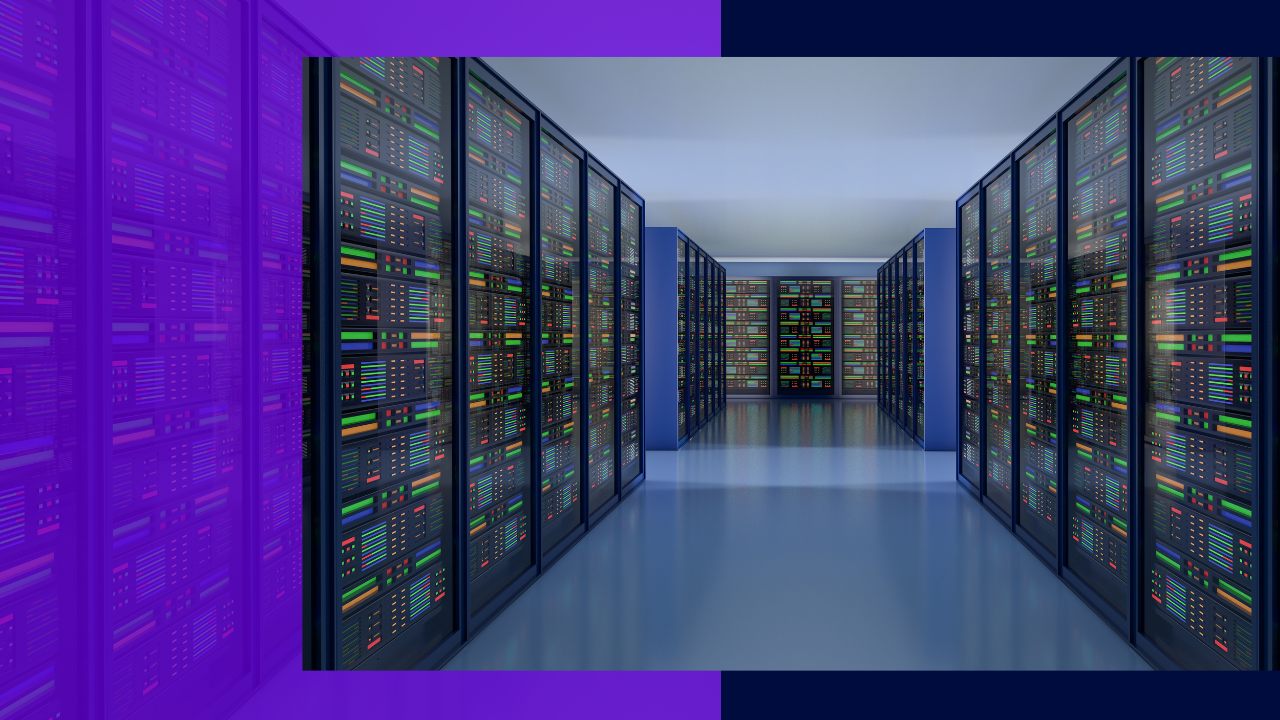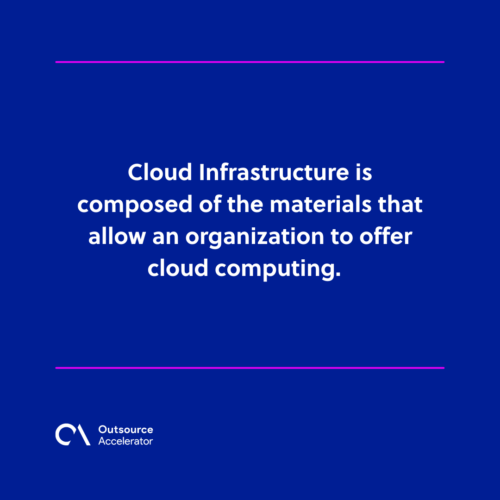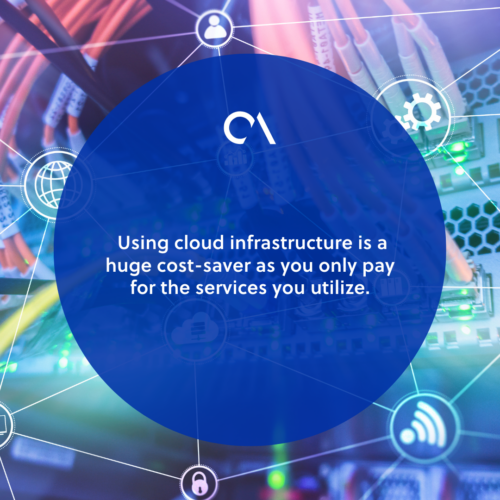What is cloud infrastructure?

As the world continues to take steps into the online age, we watch traditional systems transform, becoming more efficient, cheaper, and accessible.
A phone can now be held in the palm of your hand. A worldwide network connects us all. And what was previously only done manually can now be done virtually.
Behind all those mentioned above, we have cloud infrastructure to thank for.
This article will discuss the fundamentals of cloud infrastructure, its components, and delivery models, including why businesses should utilize it.
Cloud infrastructure – definition
Cloud infrastructure comprises all the parts that will form a “cloud.” Much of it is similar to traditional data center infrastructure, except it’s virtualized and can be accessed as a service over the internet.
The role of cloud infrastructure in cloud computing
Cloud Infrastructure is composed of the materials that allow an organization to offer cloud computing.
On the other hand, cloud computing is the delivery and usage of IT resources over a network (usually the internet).
Instead of procuring and maintaining physical servers in one location, multiple companies can order resources from a single provider.

Imagine you are interested in setting up a food service business. You visualize a spacious kitchen, a fully-stocked pantry, and a team of superb chefs.
However, what will probably come to mind next is money. It takes a lot to keep a good kitchen, buy fresh food, and hire skilled chefs.
But now consider an alternative. What if you had access to all those, simply to make the dishes you want and pay only for the time you used them?
You won’t need to worry about buying a new stove or interviewing a new cook.
This is essentially what cloud computing is.
What constitutes a cloud infrastructure?
Cloud infrastructure is composed of the following components:
Hardware
The actual physical hardware is housed by the provider and can be located in various locations. Service providers maintain them so their clients don’t have to.
Physical hardware also has backup devices like networking equipment, routers, and load balancers.
Virtualization
This component is responsible for taking a hardware’s capabilities and abstracting them into centralized pools. Therefore, this component is crucial in creating the cloud from which users will access resources.
Storage
The data and resources are managed here. When this component is virtualized, it can be easily manipulated without manually procuring separate storage servers for each new initiative.
Network
The means through which clients are able to access the cloud. Virtual networks are created on top of the provider’s physical hardware, and the internet delivers cloud resources to clients.
Three types of cloud infrastructure delivery models
Cloud infrastructure can be provided through the following standard delivery models:
- Cloud Infrastructure as a Service (IaaS) – it specifically offers basic computer infrastructure as a service and is commonly used by IT administrators.
- Platform as a Service (PaaS) – the provider offers an environment to create and test company software applications.
- Software as a Service (SaaS) – both hardware and software are provided for the client.
In all these cloud infrastructure models, clients only pay for the resource they availed of.
Advantages of cloud infrastructure to businesses
Here’s why you should consider using cloud infrastructure:
Cost-effective
The most noticeable advantage is money. Using cloud infrastructure is a huge cost-saver as you only pay for the services you utilize. There is no money spent on creating your own data center. Thus, your resources can be allocated towards purchasing more cloud resources as needed and required.

Flexibility and scalability
Cloud infrastructure also offers greater flexibility and scalability. Instead of building a new server to support a new application, DevOps teams only need to program new virtual infrastructure into its code. This is then relayed across the network.
Security
Many enterprise-level cloud infrastructures also offer good security. While there may be a tendency to assume that because the cloud is on a network, clients’ data is available to the public, this is far from the truth. Depending on the type of approach a client purchases, organizations may also be allowed to store their data in private clouds and networks.
Cloud infrastructure is a reliable system in this day that allows companies to adapt to a much greater global scale than ever before.
Find a third-party solutions provider like Outsourced that offers cloud solutions engineers and experts (among other IT and software roles) who help growing firms successfully transition to the cloud.







 Independent
Independent




